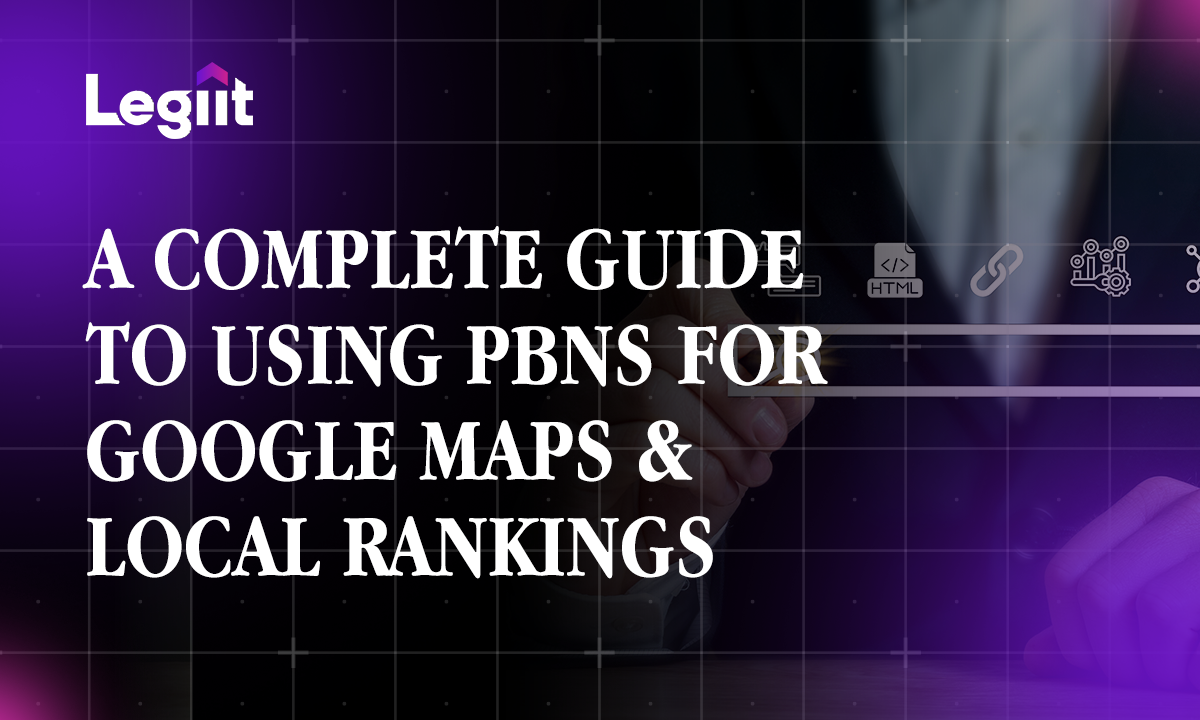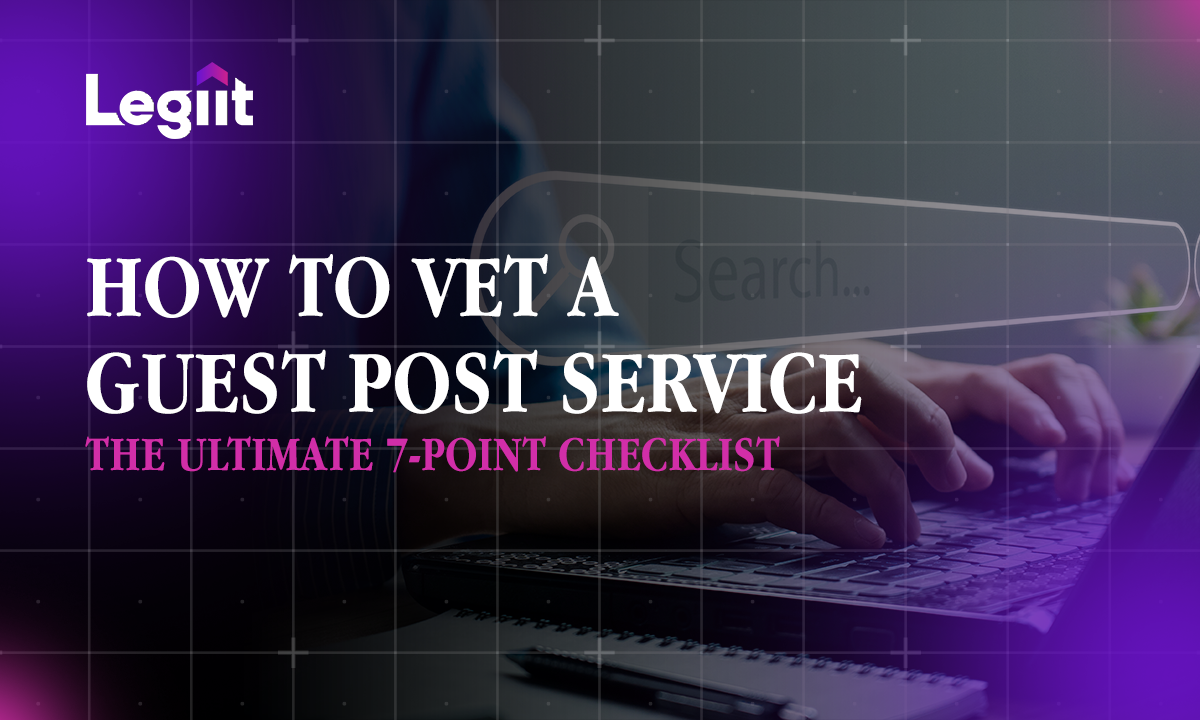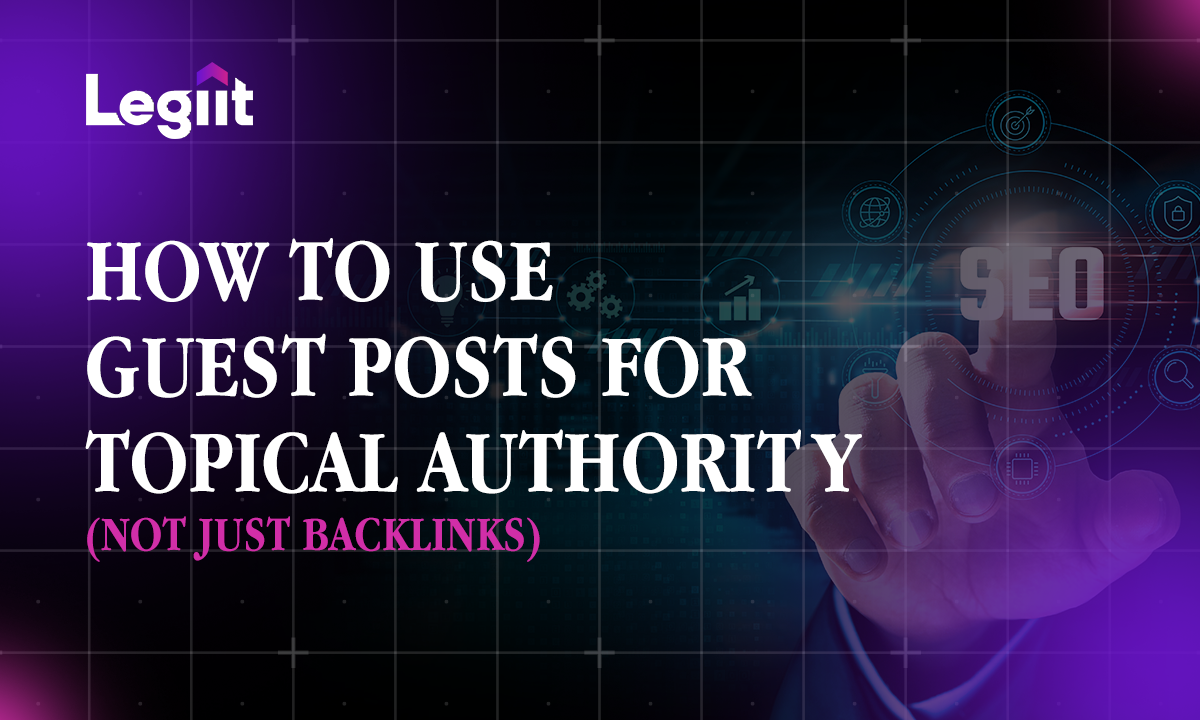Understanding the Power of LinkedIn Groups for Lead Generation
LinkedIn groups are a great tool for lead generation. They help professionals network and connect with potential clients. These groups encourage valuable exchanges of insights and foster meaningful discussions among members. By actively participating in these communities, you enhance your visibility as an industry leader and build relationships that can lead to business opportunities.
The Role of Online Communities in B2B Marketing
Online communities like LinkedIn groups play a big part in B2B marketing. They help nurture trust among participants. When you share knowledge and engage with others, you position your brand as an authority in your niche. This also encourages reciprocal interactions that can lead to fruitful partnerships. Trust is the cornerstone of successful B2B engagement, so consistent participation helps solidify your reputation.
Engaging Effectively Within Groups
To maximize your impact within LinkedIn groups, effective engagement strategies are key. Participation should go beyond merely commenting on posts; it includes initiating group discussions and sharing relevant content. Here are some effective methods for engagement:
- Start conversations: Ask questions that invite responses.
- Share valuable content: Post articles or videos that resonate with your audience.
- Be active: Comment on others’ posts to show your interest.
Defining Your Ideal Customer Profile (ICP) for Targeted Outreach
Defining your Ideal Customer Profile (ICP) is crucial for targeted outreach efforts on LinkedIn. An ICP outlines who will benefit most from your services or products. This allows you to engage strategically with prospects who are likely to convert into leads.
Steps to Create Your ICP
Creating an effective ICP requires thorough market research and a deep understanding of customer needs. Start by identifying key demographics such as location—think regions like New York or Texas—and behavioral traits that signify strong leads. This process refines your targeting strategies when engaging within LinkedIn groups and other platforms.
Utilizing Buyer Personas
Once you have established your ICPs based on geographical focus and interests related to digital marketing or social selling practices, develop detailed buyer personas from these profiles. These personas serve as guides for all future outreach efforts, ensuring that messaging aligns with client needs.
By leveraging the power of LinkedIn groups along with well-defined customer profiles, businesses can enhance their online presence while generating quality leads through relationship building within professional networks.
Optimizing Your LinkedIn Profile for Lead Generation
A well-optimized LinkedIn profile is key to lead generation. Start with a professional profile picture and banner. These elements impact first impressions significantly. Your headline should showcase your expertise and include relevant keywords about your services or industry.
The summary section lets you present your unique value proposition. Use this area to explain how you help potential clients solve their problems. Focus on building trust through transparency and authenticity. Don't forget to mention achievements or endorsements that enhance your credibility.
Make sure to list skills related to lead generation, content marketing, and professional networking. This not only boosts search visibility but also reinforces your authority in the field. Engaging with connections through comments on posts or sharing insights further increases brand visibility and establishes you as a thought leader.
Crafting Compelling LinkedIn Content to Attract Quality Prospects
Content creation is vital for attracting quality prospects on LinkedIn. To engage effectively with your audience, focus on valuable insights that cater to their interests and needs. Share multimedia content regularly, like articles, infographics, and videos that showcase industry trends or case studies of successful strategies.
Position yourself as an expert by discussing relevant topics within your niche. Provide actionable advice based on real experiences that resonate with leads looking for guidance in overcoming challenges specific to their industries.
Encourage interaction by asking questions about shared content or current events impacting the market landscape. This strategy fosters deeper engagement among prospects who may be interested in what you offer.
Understanding the Importance of Value-Driven Content
Value-driven content is essential for effective audience targeting and lead nurturing on LinkedIn. Focus on creating material that addresses pain points of prospective clients to keep them engaged over time.
Segment audiences based on factors like industry type or career stage when crafting targeted messages. This approach ensures higher engagement rates compared to generic posts aimed at broader audiences. Providing insightful information consistently builds trust; prospects will see you as someone genuinely interested in helping them succeed professionally.
Leveraging Storytelling in Your Posts
Storytelling can greatly enhance engagement strategies in LinkedIn posts. Use narratives from personal experiences whenever possible; these stories humanize interactions while highlighting problem-solving skills relevant to potential clients' needs.
Share relatable scenarios illustrating common challenges faced across various sectors followed by solutions you've successfully implemented. This technique invites readers into conversations naturally while reinforcing confidence among those considering collaboration opportunities later.
Utilizing Different Content Formats for Maximum Reach
Using diverse content formats maximizes organic reach among users active within LinkedIn today. Articles detailing best practices can work alongside brief updates that highlight key takeaways, easily digestible during busy workdays—plus engaging video clips can summarize complex ideas succinctly, compelling viewers toward action afterward!
Each format caters uniquely to user preferences: some might prefer reading detailed analyses while others enjoy visual storytelling instead! Experimenting allows you to refine approaches over time, ultimately enhancing lead-generation efforts overall.
Creating Engaging Content Within LinkedIn Groups
Engaging content plays a key role in generating leads within LinkedIn groups. To attract potential prospects, create posts that offer real value. Start by learning what interests your audience. Understanding their needs can guide your content marketing efforts effectively.
Use group discussions to share industry insights that matter to group members. Craft posts that inform and invite conversation, helping you become a trusted voice in your field. Adding multimedia content, like images or videos, can further boost engagement by making your posts visually appealing and easy to understand.
Building brand authority is important through active participation in discussions. Share success stories or case studies related to your services, offering practical insights for others. This builds trust and encourages relationship building instead of simple self-promotion.
Effective Participation and Networking Strategies in LinkedIn Groups
Maximize networking opportunities in LinkedIn groups with smart participation strategies that encourage relationship building. Start by engaging in ongoing conversations; leave thoughtful comments on others' posts to create connections with fellow members. This interaction shows genuine interest and helps build an online community.
Use conversation starters—questions about current trends—to ignite discussions within the group. These methods foster deeper engagement while showcasing your expertise on relevant topics.
Consider using engagement strategies like polls or surveys within the group to encourage participant interaction. These activities not only boost involvement but also offer valuable feedback on member preferences, informing your future content creation.
Strategies for Identifying and Targeting Ideal Audience Members Within LinkedIn Groups
Identifying ideal audience members means clearly defining your target audience profile—the traits that describe who you want to connect with in LinkedIn groups. Create an ideal customer profile (ICP) that outlines demographics like job titles, industries, and company sizes, focusing on decision-makers likely interested in your offerings.
Utilize advanced search filters on LinkedIn alongside the group's membership list feature to accurately find individuals matching this ICP framework. Engage these prospects with personalized messages that reference shared interests noted during their contributions in the group—this paves the way for effective lead capture initiatives.
By using these targeted approaches alongside strong content creation practices mentioned earlier, you'll be well-positioned not just to generate leads but also nurture professional relationships that contribute to long-term business growth online.
Utilizing LinkedIn Ads for Targeted Lead Generation
LinkedIn advertising is a vital tool for businesses focused on lead generation, especially in the B2B sector. It allows companies to implement targeted advertising strategies that enhance brand visibility and provide measurable results. To optimize conversion rates, it's crucial to understand how to effectively use LinkedIn ads and reach the right audience.
Understanding Different Types of LinkedIn Ads
LinkedIn offers various ad formats that align with different marketing goals. Here are the main types:
- Sponsored Content: Promotes posts directly in user feeds, blending into their browsing experience.
- Text Ads: Simple ads with a headline, description, and image shown on the sidebar.
- Message Ads: These messages land directly in users' inboxes, creating a personal connection.
- Dynamic Ads: Customized ads based on user profiles, enhancing relevance.
Knowing these options helps businesses align their content marketing efforts with multimedia content delivery through digital marketing channels.
Setting Up Your Ad Campaigns Effectively
For successful ad campaigns on LinkedIn, utilize lead generation tools and advanced search filters. Define your target audience by factors like industry, job title, company size, and location. This precision ensures your message resonates with potential leads.
Also, conduct A/B testing with different ad creatives and copy variations during the campaign's early stages. This will show what engages your audience best and improve performance metrics over time.
Measuring the Success of Your Ads
Analytics tracking is essential for evaluating social media KPIs related to your LinkedIn advertising efforts. Focus on key performance indicators such as click-through rates (CTR) and conversion rates from generated impressions or engagements.
Using tools like LinkedIn's Campaign Manager provides detailed reporting. You can adjust targeting parameters or budgets based on real-time data analysis to keep improving results according to business goals.
Harnessing the Power of LinkedIn Sales Navigator
Sales Navigator is a standout prospecting tool for professionals looking to refine their lead generation tactics while integrating seamlessly with CRM systems.
Features and Benefits of Sales Navigator
The platform includes features that enhance customer relationship management (CRM). One such feature is lead scoring which prioritizes prospects based on engagement levels and demographics.
This empowers sales teams to focus efforts where they are likely to yield positive outcomes. It improves efficiency in outreach processes while nurturing relationships that can lead to conversions over time without exhausting resources across wider audiences.
Leveraging Advanced Search Filters
Advanced search filters help marketers using Sales Navigator focus on buyer personas that include specific attributes such as geographical preferences. This strategy aligns well with local markets where products or services resonate strongly with identified segments.
Combining demographic details with behavioral signals ensures outreach remains relevant and connects meaningfully with potential customers, increasing the likelihood of successful conversions.
Using Insights from Sales Navigator for Better Engagement
Insights gained from Sales Navigator offer valuable market research data that informs strategies designed to improve user engagement significantly. Unlike generic methods, these insights add depth and specificity to outreach efforts.
By analyzing engagement patterns and preferences, professionals can tailor their communications effectively. This approach fosters connections that lead to better interactions and higher conversion rates overall.
Effective Lead Nurturing Strategies via LinkedIn Messaging

Lead nurturing on LinkedIn is key to building relationships and turning prospects into clients. Using personalized outreach and consistent communication helps businesses engage their target audience and nurture leads effectively.
Building Trust Through Consistent Communication
Trust is vital for successful lead nurturing. Regular engagement with prospects builds familiarity and credibility. Start conversations with tailored messages that connect with your audience's interests or challenges. Use conversation starters like sharing relevant industry news or insights to kick off discussions. Implement follow-up strategies to keep the conversation going. This may include checking in after an initial connection or responding quickly to comments on shared content.
Segmenting Your Audience for Tailored Messaging
Understanding your target audience is important for effective messaging. Create detailed buyer personas to identify specific needs and preferences within different segments of your network. This approach allows you to craft messages that speak directly to warm leads, enhancing the relevance of your communications and increasing the likelihood of engagement.
Utilizing Multimedia Content in Messaging
Adding multimedia content to your messaging can boost prospect engagement. Share articles, infographics, videos, or podcasts that provide value while showcasing your expertise in LinkedIn marketing services. This enriches conversations and demonstrates thought leadership within your niche.
Converting LinkedIn Connections into Paying Clients
Turning connections into paying clients requires strategic lead generation tactics and solid relationship management practices.
Developing a Strong Value Proposition
A strong value proposition builds brand authority by clearly explaining what sets you apart from competitors and how you can meet potential clients' needs effectively. Highlight unique benefits offered through services like LinkedIn ad campaigns or content creation strategies that deliver results.
Creating Compelling Calls to Action (CTAs)
Effective CTAs are crucial for conversion optimization during interactions on LinkedIn. Use clear language that encourages prospective clients to take action—whether it's scheduling a consultation or accessing valuable resources related to online networking strategies—this helps capture leads more efficiently.
Following Up Effectively to Close Deals
Closing deals often depends on timely follow-ups integrated within customer relationship management (CRM) tools alongside email marketing campaigns targeting interested prospects after engaging on LinkedIn ensures no opportunities are missed while maintaining interest among potential customers throughout their decision-making process.
Tracking and Measuring Your Social Media KPIs for Lead Generation Success
To make the most of LinkedIn Groups for lead generation, tracking your social media key performance indicators (KPIs) is key. Using analytics tools helps businesses understand how well their social media strategy is performing. This way, you can see measurable results that boost customer acquisition and improve conversion rates. By integrating these insights with a Customer Relationship Management (CRM) system, you can sharpen your outreach efforts.
Key Performance Indicators (KPIs) to Monitor
Keeping an eye on specific KPIs lets you evaluate how well your engagement strategies are working in LinkedIn Groups. Here are some important metrics to track:
- Engagement Rate: This shows how actively group members engage with your posts through likes, comments, and shares.
- Conversion Rate: Measure how many interactions within the group lead to inquiries or sales.
- User Engagement Levels: Look at participation in discussions or polls to gauge member interest.
Focusing on these indicators helps build a strong online reputation while increasing user engagement among your target audience.
Tools for Tracking Your LinkedIn Performance
Using effective analytics tracking tools is vital for gaining insights from your LinkedIn activities. Consider CRM tools like HubSpot or Salesforce, which provide analytics features tailored for social media platforms. These tools enable monitoring of various performance aspects, including:
- Content Insights: Discover what type of content resonates best with group members by reviewing post-performance data.
- Audience Demographics: Understand who engages with your content based on their industry roles or interests.
This detailed analysis allows for more informed decision-making regarding future marketing strategies.
Analyzing LinkedIn Insights to Refine Your Strategy
Regularly analyzing insights from LinkedIn can refine your digital marketing approach aimed at optimizing leads generated from groups. Conducting market research using this data clarifies trends that influence potential prospects' behaviors and preferences.
Understanding Audience Engagement Metrics
It's essential to grasp audience engagement metrics when nurturing relationships within groups. Focus on prospect engagement by participating actively in group discussions. This not only builds rapport but also establishes you as an authority on relevant topics. Regularly reviewing discussion threads helps identify common questions or pain points among group members; addressing these areas builds trust with potential clients.
Adjusting Strategies Based on Data Analysis
Data analysis should guide changes in lead nurturing tactics and relationship-building efforts. For instance, if certain post types drive higher interaction rates than others, increase the frequency of those posts while exploring targeted advertising campaigns that align closely with observed interests. Adapting strategies based on real-time feedback creates deeper connections within communities and maximizes opportunities for conversions over time.
By implementing tracking protocols alongside strategic adjustments based on data-driven insights, businesses can enhance their approach to leveraging LinkedIn Groups effectively for long-term growth in lead generation efforts.
FAQs About Lead Generation in LinkedIn Groups
Q1: How can lead generation tools enhance my LinkedIn strategy?
Lead generation tools simplify the process of connecting with prospects. They help you identify potential clients and streamline outreach efforts.
Q2: What is lead scoring, and why is it important?
Lead scoring ranks prospects based on their engagement and potential value. It helps prioritize follow-ups with warm leads most likely to convert.
Q3: How can automated outreach benefit my marketing efforts?
Automated outreach saves time by sending personalized messages at scale. This allows you to maintain consistent communication with multiple leads.
Q4: Why should I focus on geographical targeting in LinkedIn groups?
Geographical targeting allows you to connect with local decision-makers. This approach enhances your chances of building business relationships in your area.
Q5: How does referral marketing work within LinkedIn groups?
Referral marketing encourages group members to recommend your services. This strategy builds trust and generates quality prospects through personal endorsements.
Additional Strategies for Effective Lead Generation
- Engagement Strategies: Use polls and surveys to encourage interaction.
- Connection Building: Engage actively with group members' posts.
- Industry-Specific Groups: Join niche groups to target specific audiences.
- Thought Leadership: Share insights that position you as an industry expert.
- Showcase Pages: Create pages highlighting specific services or products.
- Quality Prospects: Focus on connecting with decision-makers within your industry.
- Multimedia Content: Incorporate videos and infographics for better engagement.
- Marketing Automation: Implement tools to streamline lead nurturing processes.
- Marketing Funnels: Design funnels tailored to group interactions.
- Content Insights: Analyze which content resonates best with group members.
- Online Reputation: Maintain a positive presence through consistent engagement.
- Follow-Up Strategies: Develop timely follow-up plans post-initial contact.
- Local Marketing: Target regional leads for tailored outreach campaigns.
- Innovative Advertising: Experiment with ads in groups for better visibility.
- Sales Navigator Usage: Leverage Sales Navigator features for targeted outreach.
These strategies will help you optimize your lead generation efforts effectively while nurturing relationships within LinkedIn groups.















 Download
Download